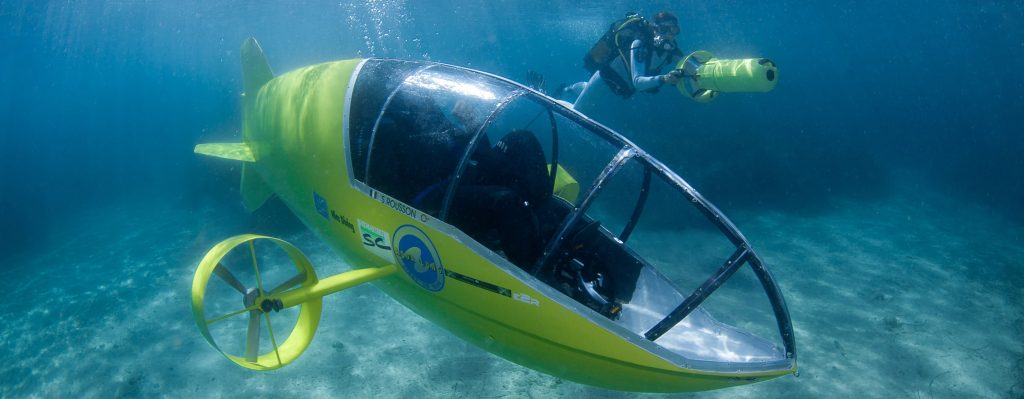An endurance runner, even under water: the xiros polymer ball bearing
Patrick Czaja | 19. May 2021
The most environmentally friendly way to dive is to use flippers. But if you find that too taxing and prefer a certain level of convenience, you can use a pedal-powered submersible. The French adventurer Stephane Rousson, who once crossed the English Channel with a pedal-powered airship, has developed one. “Scubs_x0002_ter“ is the name he gave to his new vehicle: the diver sits in full gear in the cockpit and uses his hands to control the flexible propeller, which can accelerate the submersible to up to ten kilometres per hour and turn in all directions. “But the Scubster,” he says, “isn’t built for speed, but for manoeuvrability. It’s intended to be a great way explore the underwater world.” But what does this have to do with our xiros polymer ball bearings? We’ll tell you.
The developer was looking for new components that would improve service lifeand quality and that were, cost-effectiveand low-maintenance. The guides and bearings for the propeller axes and steering and turning drives are always subjected to contact with seawater. This means that they require components that can handle a very corrosive application environment. Metal ball bearings have no chance here. The low radial and axial loads on the bearing and the very moderate speeds (150rpm) prompted Rousson to choose xiros polymer ball bearings with glass balls. They are lubrication-free, resistant to chemical reactions in salt water, and very well-suited to propeller axes and steering and turning drives.

Plastic vs. metal in an endurance test
To test our polymer ball bearings’ corrosion resistance, we submersed our bearing in salt water – but not by itself. A metal fixed flange ball bearing joined it in the endurance test. A container was filled with salt water, which was then heated to 80°C, and the bearings were placed in the saline solution for 120 hours. To facilitate any corrosion, neither bearing was submersed completely, so that each also had contact with the air. You can view the test results here: https://blog.igus.eu/kugellager-unter-wasser-im-test/
